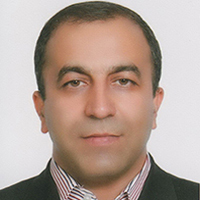Effect of applying silicate filter with subsurface drip irrigation using treated wastewater on soil chemical parameters
Increasing need for water in the arid areas of the world has resulted in the emergence of wastewater application for agriculture and landscape. The use of wastewater for irrigation is increasingly being considered as a technical solution to minimize soil degradation and to restore nutrient content of soils. Irrigation with wastewater due to nutrients in its composition caused to effect on soil, plant, and groundwater. Under irrigated agriculture, a certain amount of excess irrigation water is required to percolate through the root zone, so as to remove the salts which have accumulated as a result of evapotranspiration from the original irrigation water. Therefore, it is more necessary to manage water. Reuse of treated wastewater for turf irrigation is often viewed as a way to maximize existing urban water resources. This study was done at Islamic Azad university (Khorasgan branch)'s filed in summer, autumn and winter 2014. The soil of Islamic Azad university (Khorasgan branch)'s filed is classified in loamy texture. A factorial experiment plan was designed with 2 main treatments of irrigating system (Silica filter around emitter of subsurface drip irrigation (SDI) and Drip Irrigation (DI) methods) and two sub-treatments of irrigation water sources (irrigation with field water and wastewater of Khorasgan university with EC 6 dS/m). Also, 4 replications were considered in the plan that irrigated by 9 months. All analyses were done every three months by APHA methods. The results of soil analysis showed the OM% was low in both soil depths (0.2 % and 0.1% for surface soil (0-30 cm) and subsoil (30-60 cm), respectively). Also, the soil salinity was 8.91 and 7.78 dS/m for 0-30 and 30-60 cm of soil depths, respectively. Soil pH was neutral until moderate alkali (8.91 and 7.78 for the two soil depths). EC and pH in field water was about 4.19 dS/m and 7.01, respectively. Also, the wastewater that made by mixture of field water and leachate of Organic compost of Esfahan as second water irrigation had EC equal 6 dS/m. The wastewater quality was low. The concentration of all cations and anions was very high and upper than standard concentration, especially SO42-, Cl-, Na and Ca. The results show that irrigation with wastewater by passing time caused to significantly increase pH, OC, EC, SO42-, NO3-, PO3-, Cl-, Ca, Mg, Na and K, except HCO3- concentration in soil. Based on the results, the maximum concentration of N-NO3 was observed at subsoil, in opposit to the maximum concentration of N-NH4 which was at surface soil due to colloid absorption. On the other hand, the effect of depth of irrigation illustrated that all of the soil indexes except K, NO3, HCO3- and PO3- were significantly higher in surface soil than subsurface soil layer due to four factors: leaching, adsorption, organic complex and phosphate combination. The mean of interaction effect of time, depth, and kind of irrigation method has a significant difference at 1% on soil characteristics, except OM. Based on the results, the Silica filter application under SDI irrigation system caused to increase irrigation efficiency to remove more salts by surface adsorption mechanism and treatment of wastewater. The choice should depend on the origin and quantity of contamination anticipated in the system, as well as the size of the irrigation system. The based on the results, it seems particles of silica filter affectes removing cation and anions from wastewater. This study suggests that wastewater irrigation lead to beneficial changes in physico-chemical properties of the soil. It can be concluded that untreated wastewater can be used confidently in agricultural land, in the short term; while primary treated wastewater can be used in sustainable agriculture in long term. So, we recommend modifying the dose of irrigation, in order to reduce the quantity applied and to increase the frequency of application to avoid the loss of aggregation. We also suggest long-term studies to assess the feasibility of wastewater reuse because of a number of unanswered questions exist and still there is much room for development and work towards a more solid understanding of the actual consequences of the release of contaminant in the environment. The use of unconventional water sources (e.g. wastewater), as well as the use of high efficient irrigation systems (e.g. drip irrigation systems), has found special acceptability for management in agriculture.
- حق عضویت دریافتی صرف حمایت از نشریات عضو و نگهداری، تکمیل و توسعه مگیران میشود.
- پرداخت حق اشتراک و دانلود مقالات اجازه بازنشر آن در سایر رسانههای چاپی و دیجیتال را به کاربر نمیدهد.


